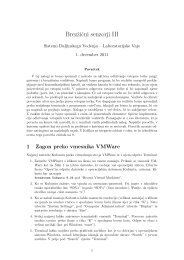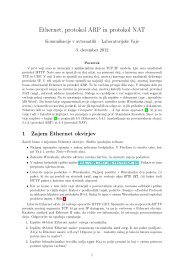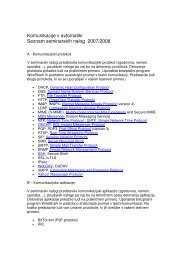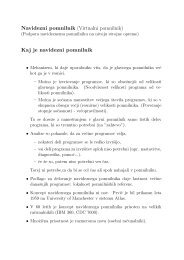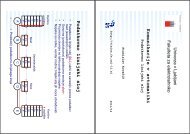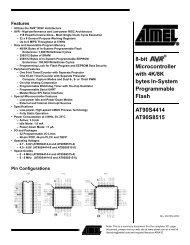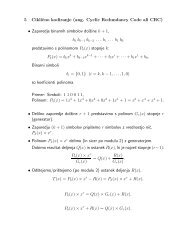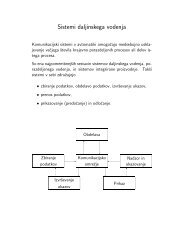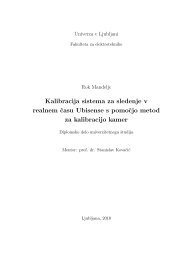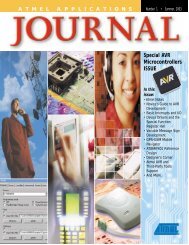avtomatska analiza gibanja v izbranih moštvenih športnih igrah
avtomatska analiza gibanja v izbranih moštvenih športnih igrah
avtomatska analiza gibanja v izbranih moštvenih športnih igrah
Create successful ePaper yourself
Turn your PDF publications into a flip-book with our unique Google optimized e-Paper software.
Abstract<br />
This thesis is focused on the automatic multi-agent trajectory-based analysis of<br />
player motion in team sports. The hierarchical structure of the sport games is<br />
considered when developing the analysis methods. This way we decompose a<br />
very complex problem of team sport analysis into several subproblems. Given<br />
the hierarchical structure of the team sports, we propose a three-step analysis<br />
procedure comprised of segmentation of continuous game into several game<br />
phases, activity recognition inside the individual game phases and activity<br />
evaluation using activity templates. The proposed methods have been tested<br />
in basketball and partially in handball since, from the analysis standpoint, this<br />
two games represent a very challenging multi-agent environment.<br />
In the process of the game segmentation we try to find parts of the game that<br />
are particularly interesting for further analysis (e.g. offensive phase or defensive<br />
phase of the game). To do this we propose a two-stage segmentation procedure. In<br />
the first stage a probabilistic game model is applied to the player-trajectory data<br />
in order to segment individual game instants into one of the three game phases<br />
(offensive game, defensive game and time-outs). In the second stage a nonlinear<br />
or Gaussian smoothing kernel is used to enforce the temporal continuity of the<br />
game. The obtained results suggest that the proposed approach is very robust<br />
and as such could be applied to various team sports. It can handle unusual game<br />
situations such as player exclusions, substitution or injuries which may happen<br />
during the game.<br />
Once the game is segmented into the game phases we obtain a set of short game<br />
segments which denote the offensive or defensive team activities. For this reason,<br />
the next step of the analysis procedure focuses on the recognition of the type of<br />
activity the team was performing. To do this, we propose the use of trajectory-<br />
based action detectors (e.g. starting formation, screen and move) which are<br />
the building blocks of basketball game. This detectors are used to produce a<br />
semantic description of the observed activity. Finally, the activity is recognized<br />
by comparing its semantic description with the descriptions of manually defined





